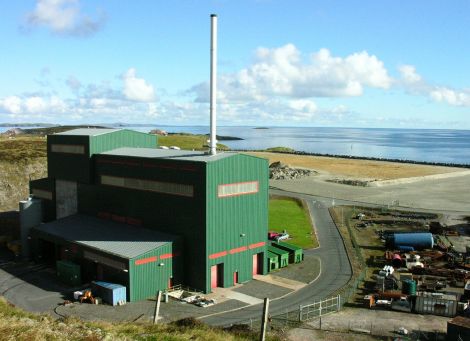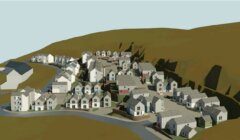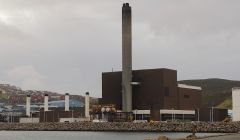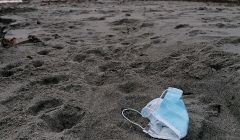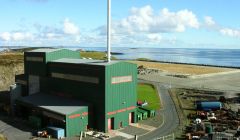Community / District heating leaks only ‘pinhole’ sized
THE RECENT leaks in the Lerwick District Heating network which prompted two shutdowns were only “pinhole” sized, with external corrosion the cause.
Shetland Heat Energy and Power (SHEAP) executive director Derek Leask said the issue, at the top of Gilbertson Road, stemmed from pipeline patchwork which had corroded.
Residents of Lerwick south of Gilbertson Road were twice left without hot water or heating overnight as the network was shutdown to allow the repairs.
Leask explained that most maintenance on the district heating network can take place without disruption, but the location of the fault meant that part of the system had to be closed off.
He said the piece of pipeline was patched over when installed by a company many years ago.
“They hadn’t actually made a very good job at putting on the patch,” Leask said.
“The patch had suffered from external corrosion. We cut the whole section out and replaced that section with new pipework, insulated and covered it.”
The impact of the fault was briefly raised at a meeting of Lerwick Community Council on Monday, with questioning over the potential effect of any leaks from the district heating scheme.
Town councillor John Fraser also pondered if inhibitor, a liquid made from chemicals which is used to keep central heating working efficiently, was added to the system, but former SHEAP director Gary Robinson said he believed it was just hot water.
Leask clarified that no inhibitor is used, adding that it is only treated water that is pumped around town.
“We put a bit of alkali in to balance up the PH, but it’s not an inhibitor,” he said.
“It’s really taking any oxygen out of the water, to stop corrosion. But taking oxygen out of the water is not adding anything into the water.”
Become a member of Shetland News
Leask said any leaks in the pipeline are “pinhole” sized with no real environmental impact, and denied suggestion the recent fault could have seen leaks go into the Clickimin Loch.
“It’s maybe washed the pavements a wee bit,” he said.
The district heating scheme, operated by SHEAP, runs pipes all across the town, supplying hot water to homes, schools, retail and care homes.
Over 1,200 customers are supplied by the network of over 30km of pipeline.
The heat is generated from the Energy Recovery Plant at Gremista, which burns domestic and commercial rubbish from Shetland and Orkney, while there is also an oil-fired boiler station used to meet peak demand and for when the incinerator is on downtime.
Meanwhile, thermal surveys of the pipe network due to be carried out by a drone have not yet taken place a result of the prolonged cold weather.
The non-intrusive, non-photographic survey of the pipes was scheduled to take place last month before being postponed.
Leask explained: “If there’s ice on top of the pavements, it prevents the thermal image getting up to the drone.”
Become a member of Shetland News
Shetland News is asking its readers to consider paying for membership to get additional perks:
- Removal of third-party ads;
- Bookmark posts to read later;
- Exclusive curated weekly newsletter;
- Hide membership messages;
- Comments open for discussion.
If you appreciate what we do and feel strongly about impartial local journalism, then please become a member of Shetland News by either making a single payment, or setting up a monthly, quarterly or yearly subscription.






